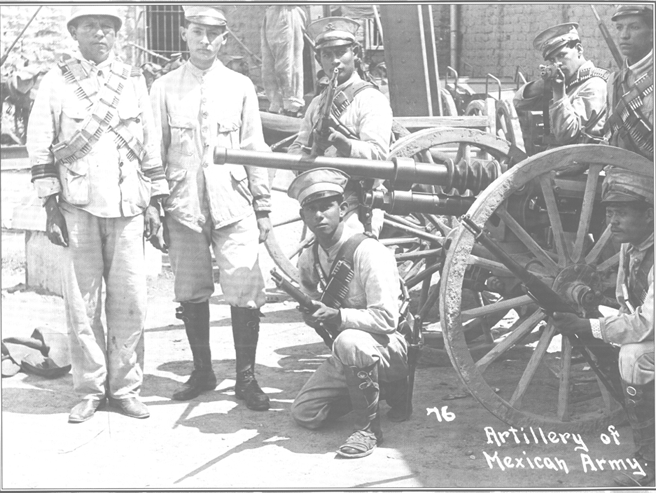 |
The Revolutionary Historiography
 |
There have been many interpretations of Mexican history. The Revolutionary view is that the Revolution of 1910 was a true Revolution. Before this time Mexico was a feudal society and had no chance of becoming a modern state. Looking at the division of wealth, and the fact that a large portion of the population were in a form of debt peonage working the land in exchange for subsistence wages, this is an easy connection to make.
The interior of the country was controlled by the Rurales, a form of state police. The wages of the indigenous people were lower than those paid to foreign workers, as shown by the complaints of the workers on the state railroad. Workers on the state railroad complained to the government about the difference in wages. When nothing was done they attempted to band together. However, unions were illegal so they formed mutual aid societies with miners to work toward their common goal of equal wages and access to advancement.
After the Revolution, political parties formed to support the worker and the Mexican. The PRI was the leading one of these. They came to power and stayed there by using unions and mutual aid societies to provide assistance to their members. This made them popular and they were able to win elections. As they became more powerful the PRI began nationalizing foreign property culminating in 1938 when President Cardenas nationalized the holdings of the US Standard Oil Company.
Did the government owe its legitimacy to the Revolution and its supporters? Did this debt cause the government to adopt a pro-Mexican policy in labor and property disputes?